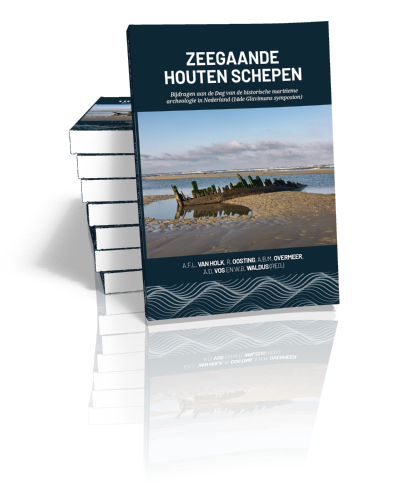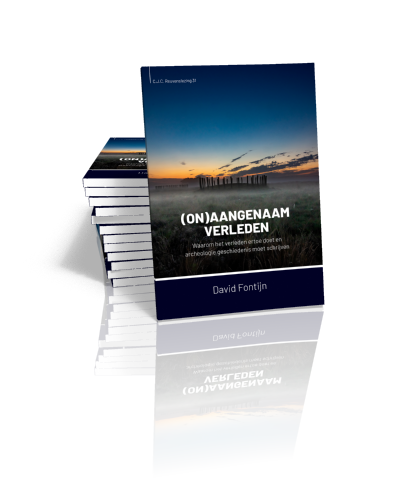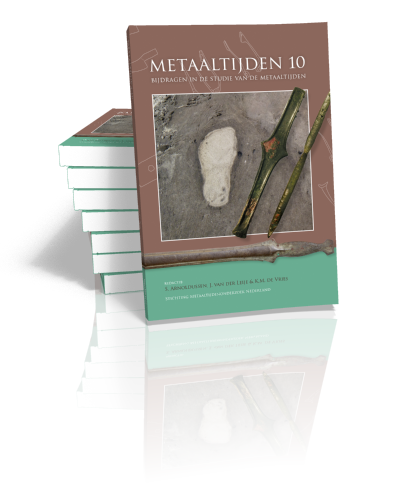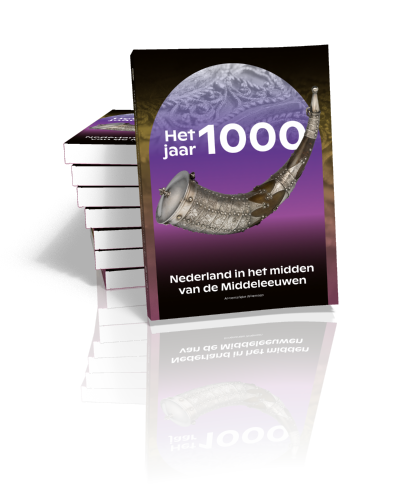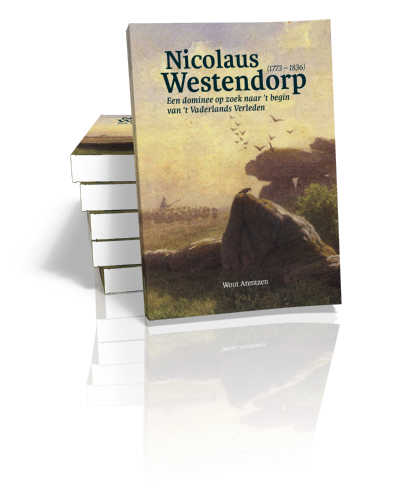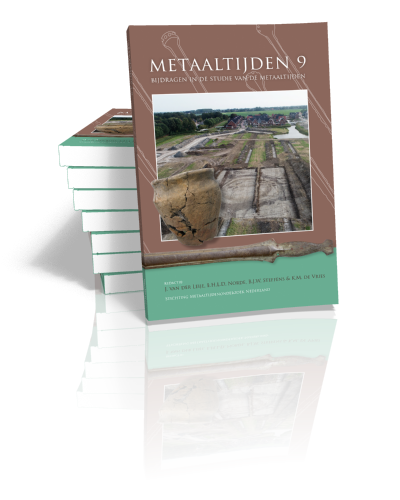Before Temples
Rectangular structures of the Low Countries and their place in the Iron Age belief system
R. de Leeuwe | 2023
Before the introduction of Roman temples in the Low Countries, there used to be ‘open air cult places’ in the Iron Age. That is at least the assumption based on descriptions given by classical writers…
Zeegaande houten schepen
Bijdragen aan de Dag van de historische maritieme archeologie in Nederland (14de Glavimans symposion)
Edited by A.F.L. van Holk, R. Oosting, A.B.M. Overmeer, A.D. Vos en W.B. Waldus | 2023
Op 9 december 2022 is bij Batavialand te Lelystad de Dag van de historische maritieme archeologie in Nederland (het 14de Glavimans symposion) georganiseerd. Het centrale thema was ‘Zeegaande houten schepen’. Als bestuur van de Glavimans…
(On)aangenaam verleden
Waarom het verleden ertoe doet en archeologie geschiedenis moet schrijven
David Fontijn | 2023
Met het huidige archeologisch bestel, de impact van de ‘third science’- revolutie en de toenemende aandacht voor erfgoed lijkt de Nederlandse archeologie sterker in de samenleving verankerd dan ooit. Maar wie zit er eigenlijk te…
Metaaltijden (vol. 10)
Bijdragen in de studie van de metaaltijden
Edited by Stijn Arnoldussen, Judith van der Leije & Karen M. de Vries | 2023
Deze bundel vormt de neerslag van de 10e Nederlandse metaaltijdendag gehouden op 16 en 17 oktober 2022 in Assen. Op de ochtend van de eerste dag werden lezingen gehouden rondom de tentoonstelling van de Nebraschijf.…
Het jaar 1000
Nederland in het midden van de Middeleeuwen
Annemarieke Willemsen | 2023
De eeuwen tussen 900 en 1100 zijn een belangrijke overgangsperiode in de geschiedenis van wat nu Nederland is. Het gebied verandert ingrijpend qua landschap, bevolking, bebouwing, taal en cultuur. Het wordt beter bereisbaar. Deze veranderingen…
Nicolaus Westendorp (1773 – 1836)
Een dominee op zoek naar ‘t begin van ‘t Vaderlands Verleden
Wout Arentzen | 2022
Nicolaus Westendorp (1773-1836) was een dominee in Nederlandse romantische traditie. Zo als veel van zijn collega’s begon hij zijn literaire leven als dichter. Hoewel het dominee zijn altijd zijn hoofd doel bleef werd hij landelijk…
Metaaltijden (vol. 9)
Bijdragen in de studie van de metaaltijden
Edited by Judith van der Leije, Eric Norde, B.J.W. Steffens & Karen M. de Vries | 2022
Deze bundel vormt de neerslag van de 9e Nederlandse metaaltijdendag gehouden op 9 oktober 2021 in Leiden. Op die dag werden in de ochtend lezingen gehouden rondom het thema ‘brons- en ijzertijd in het heden’.…
Search results for cat-dutch-archaeology
:
Before Temples
Rectangular structures of the Low Countries and their place in the Iron Age belief system
R. de Leeuwe | 2023
Before the introduction of Roman temples in the Low Countries, there used to be ‘open air cult places’ in the Iron Age. That is at least the assumption based on descriptions given by classical writers…
Zeegaande houten schepen
Bijdragen aan de Dag van de historische maritieme archeologie in Nederland (14de Glavimans symposion)
Edited by A.F.L. van Holk, R. Oosting, A.B.M. Overmeer, A.D. Vos en W.B. Waldus | 2023
Op 9 december 2022 is bij Batavialand te Lelystad de Dag van de historische maritieme archeologie in Nederland (het 14de Glavimans symposion) georganiseerd. Het centrale thema was ‘Zeegaande houten schepen’. Als bestuur van de Glavimans…
(On)aangenaam verleden
Waarom het verleden ertoe doet en archeologie geschiedenis moet schrijven
David Fontijn | 2023
Met het huidige archeologisch bestel, de impact van de ‘third science’- revolutie en de toenemende aandacht voor erfgoed lijkt de Nederlandse archeologie sterker in de samenleving verankerd dan ooit. Maar wie zit er eigenlijk te…
Metaaltijden (vol. 10)
Bijdragen in de studie van de metaaltijden
Edited by Stijn Arnoldussen, Judith van der Leije & Karen M. de Vries | 2023
Deze bundel vormt de neerslag van de 10e Nederlandse metaaltijdendag gehouden op 16 en 17 oktober 2022 in Assen. Op de ochtend van de eerste dag werden lezingen gehouden rondom de tentoonstelling van de Nebraschijf.…
Het jaar 1000
Nederland in het midden van de Middeleeuwen
Annemarieke Willemsen | 2023
De eeuwen tussen 900 en 1100 zijn een belangrijke overgangsperiode in de geschiedenis van wat nu Nederland is. Het gebied verandert ingrijpend qua landschap, bevolking, bebouwing, taal en cultuur. Het wordt beter bereisbaar. Deze veranderingen…
Nicolaus Westendorp (1773 – 1836)
Een dominee op zoek naar ‘t begin van ‘t Vaderlands Verleden
Wout Arentzen | 2022
Nicolaus Westendorp (1773-1836) was een dominee in Nederlandse romantische traditie. Zo als veel van zijn collega’s begon hij zijn literaire leven als dichter. Hoewel het dominee zijn altijd zijn hoofd doel bleef werd hij landelijk…
Metaaltijden (vol. 9)
Bijdragen in de studie van de metaaltijden
Edited by Judith van der Leije, Eric Norde, B.J.W. Steffens & Karen M. de Vries | 2022
Deze bundel vormt de neerslag van de 9e Nederlandse metaaltijdendag gehouden op 9 oktober 2021 in Leiden. Op die dag werden in de ochtend lezingen gehouden rondom het thema ‘brons- en ijzertijd in het heden’.…
Browse by subject




